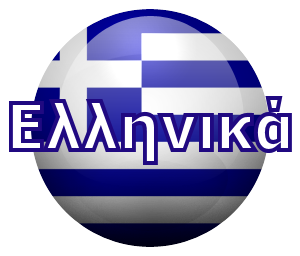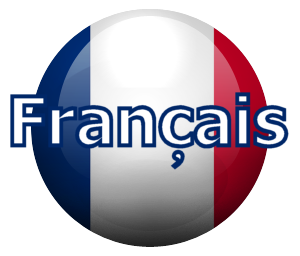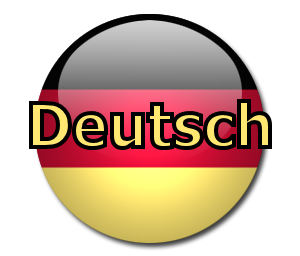Ottoman Occupation and Greek Revolution and their influence on the villages of Parnonas
Ottoman Period in Arachova/Karyes
The only testimony that period for Karyes is from the traveler and geographer Porcacchi (1619 AD), which refers to Arachova as the largest village of the region, maintaining the character that had by Frank as the Great Arachova. Over Ottoman rule, Arachova had four (4) districts (machala): the Koutsomachalás (the area keeps its name until nowadays), the Kato Machalás near St. Paraskevi's church, the Mauriákinos Machalás near the St. Ioannis church and the Pano Machalás near the church of Panagia.
Indeed, at that time there was a controversy about the cultivation rights of Karyes northeastern plateau (Kambos) between Karyes and the villages of Vourvoura and Kerasia. The result was the campaign of Arachova's inhabitants against farmers-abusers and after a long and bloody fray, the plateau ownership remains in Arachova. After a reference to the Ottoman government, a trial took place and the ottoman judge Kadis gave a favorable decision for Arachona, grace to the bribery (as it is said) by the chief of Arachova Panagos Mavrias. The limits of Karyes territorial jurisdiction set out then just as they are today the boundaries of the local community.
The Arachovitans enlist in the Greek Revolution
The joyous message of the Greek Revolution touched the hearts of the Arachovites. Although Anagnostis D. Matalas made a small body in 1821 and Paraskevas Matalas was recognized as chieftain in 1825 the absence of a major chieftain at Arachova/Karyes especially at the beginning of the Revolution forced many Arachovitans to have been classified into various troops of mainly Lacedaemonian (Spartans) chieftains. So the most went to the bodies of Petros Barmpitsiotis under the guidance of heroic bishop Theodoritus II of Vresthena, while others joined in the bodies of G. Giatrakou and Nikitas Stamatelopoulos (Nikitaras). Under their commands, according to the Archives of Fighters at the Greek National Library, approximately 80 registered names of warriors from Karyes took part in almost all the battles that took place in the Peloponnese campaign during 1821-24.
The arrival of Ibrahim of Egypt
After the great victories of the Greek revolutionary army (siege of Tripolis, battle of Dervenakia), the Turks, seeing that they have no other choice, decided to call Ibrahim Pasha the son of the Governor of Egypt. Thus in March 1825 the Turkish-Egyptian fleet reached the coast of the Peloponnese, carrying the most modern troops of the East as the Egyptian army was organized by French Officers. It disembarked in Messinia and occupied it with continuous battles within 2 months. In early June he camped in Arcadia and occupied Tripolis on June 10. Then he continued his march to Argolida where on June 14 he campaigned for Argos and Nafplio, but he was stopped at Myli where General Ypsilantis successfully resisted. On the 17th he returns to Tripolis. From there he receives constant pressure from the Verbena-based rebels forces involved in constant battles, but his army eventually succeeds in striking and dismantling the Verbena camp on July 27.
The Campaigns in Laconia and the Burning of Arachova
After these successes his goal then became Laconia and Mani region. On August 16, his troops were marching for Mystras. The rebels have been mired in the foothills of Taygetos and Parnonas, thus protecting our villages. However the Egyptian army marched on Mystras and Monemvasia burning the villages and captivating the population. Then as the winter approached the Ibrahim's army returned to Tripoli and camped there, while Ibrahim himself went to Messinia.
In the winter and spring of 1826, Ibrahim's Egyptian army went to Messolonghi to assist Kyoutachi's Turkish forces in the siege. After the heroic Greek exodus (exit) of Messolonghi (April 10-11) he returned to Tripoli. He then decided to send expeditionary troops to the Parnon Mountain region. Starting on May 11th his army destroyed the villages of Kastri, Aghios Petros (Saint Peter), Vervena and Doliana. On May 12th 1826 the Egyptian troops arrived at Karyes (Arahova) and began the destruction of the settlement, the so-called "burning of Arachova"(1). The villagers ran to the caves and scrubs of Parnon Mountain in order to hide themselves with any property they could carry, while the Egyptian-Ottoman troops of Ibrahim almost completely burned down the village. Among the few buildings that survived was the church of St. Paraskevi, which was ignited but the shrine was the only burned. The next days the settlements of Varvitsa, Vrestena and Sellasia (Vourlias) were destroyed too. Ibrahim himself wits its main forces campaigned from Kalamata to Mani (west path) but in the Almyros and Dyros the Greeks Maniats won decisively.
Returning to Tripolis, he then planed to attack Mani from the east. For this purpose he proceeded to Astros where he found resistance from the Greek forces of Nikitaras and from there divided his army into three parts in order to reach Mystras via Parnon mountain. One section proceeds to Tsakonia, destroying the village of Prastos, the other moving through the village of Vamvakou, and the third headed by Ibrahim himself through the villages of Aghios Petros and Karyes (Arachova) finding all these villages already totally destroyed. As the three parts of his army marched in order to reach the Eurotas Valley whenever they met Greeks they simply killed them. Two (2) Arachovites were killed at Neraidovrisi and the other twenty (20) at Kakonieri, while many others, mainly women and children, captured them for sale in the eastern stairwells (fortunately, during the next months a number of relatives succeeded in acquiring many captives who had been transferred to Pylos by paying ransom).
The inhabitants of the region's villages, though living in chaos with their homes burned down, continued to fight in the Revolution by striking the Egyptian army's rear bodies. So initially a squad of 150 Greek horsemen attacked an Egyptian regiment near Karyes, and decisively on August 19 near the village of Vassaras the Greek rebels striked a main Egyptian task force killing 185 and capturing 17 Turkish-Egyptians and releasing 40 Greek captives. At the same time, they release 10,000 goats, 300 oxen and 200 horses and mules. Ibrahim's army without supplies was again defeated by the Maniats at Poliaravos and then he withdrawn to Tripoli and then to Methoni in Messinia.
To the Liberation
Then the Arachovites went to assist General Karaiskakis forces in the siege of Athens, and next year with the Naval battle and the destruction of the Turkish-Egyptian from the united British-French-Russian fleet Greece was liberated! How much pain and sacrifices our ancestors suffered in order to become free people. Many books described tragic stories of killings and captivities: Mothers who were captured and managed to get free returning back to destroyed villages with some of their children (because the others were lost) and with their husbands lost in battle. As the poet said, "the tree of Liberty is watered with blood."
Sources:
(1) Frantzis Β, 442
(2)Κ.Μ. Pitsios (1948), Karyaí (Aráchova) Lakedaímonos, Historical, Cultural Study
Previous: Roman-Byzantine Period |
Next: Independence - 20th Century |












